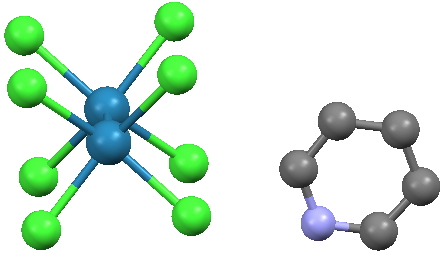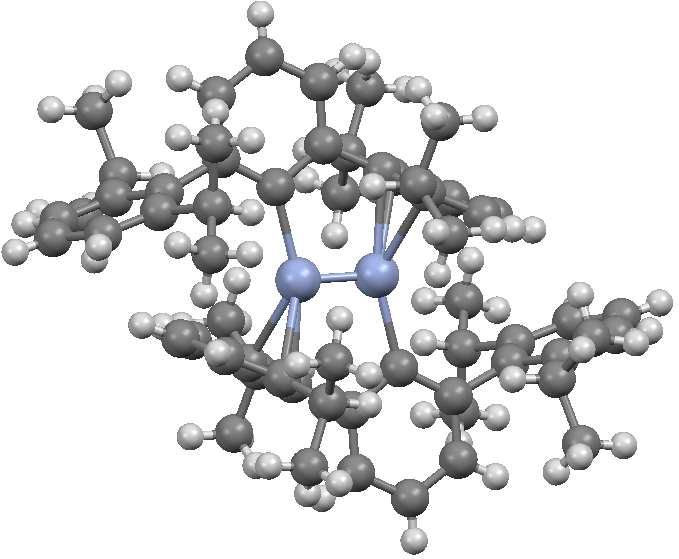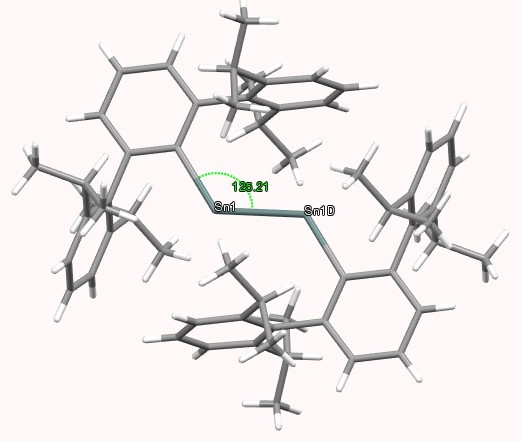The concept of a shared electron bond and its property of an order is almost 100 years old in modern form, when G. N. Lewis suggested a model for single and double bonds that involved sharing either 2 or 4 electrons between a pair of atoms[cite]10.1021/ja02261a002[/cite]. We tend to think of such (even electron) bonds in terms of their formal bond order (an integer), recognising that the actual bond order (however defined) may not fulfil this value. I thought I would very (very) briefly review the history of such bonds.
- 1916: G. N. Lewis[cite]10.1021/ja02261a002[/cite] proposed a model for carbon involving a cube with one electron at each corner, thus making an octet.‡ A single bond would be created by two atoms sharing a common edge (= 2 shared electrons), and a double bond by sharing a common face (= 4 shared electrons). The recognition that the formal bond order of two could be partitioned into one electron pair of σ symmetry and one of π was not achieved until ~1929 (by Hückel). It is also now recognised that whilst most bonds of order 1 are of type σ, a rare few can be π (these are called homo or “suspended” bonds).
- 1916: Lewis also speculates about a rather less well-known model comprising “eight electrons in which pairs are symmetrically placed about a center gives … the model of the tetrahedral carbon atom.” He then points out that two tetrahedra, attached by one, two or three corners each would represent the single, the double and the triple bond. The latter “represents the highest possible degree of union between two atoms“. He chooses acetylene as an example, representing it as H:C:::C:H and two “tautomers” (we would now call them valence bond isomers)† with lower bond orders, these being what we now call a bis-carbene and a biradical:
- 1965: It took a remarkable wait of 49 years (a span which encompasses the development and maturity of quantum mechanics) to extend the “highest possible degree of union” to the quadruple bond, identified by Cotton in the previously known compound [Re2Cl8]2-.[cite]10.1021/ic50025a016[/cite].

Click for 3D
In fact, Mulliken had drawn a quadruple bond between the two carbons in C2 back in 1939[cite]10.1103/PhysRev.56.778[/cite] (see Table 1, p 779) but he probably thought of it as a very high energy excited state and that it did not merit further discussion. The latest thoughts are that C2 does indeed have (a weak) fourth bond[cite]10.1002/anie.201208206[/cite] in its ground electronic state.
- 2005: Another 40 years elapsed before quintuple or “fivefold” bonding was discovered by Power[cite]10.1126/science.1116789[/cite] in ArCrCrAr. There has been a bit of a race since to discover the shortest example of this genre.

Click for 3D
- 2013: Unlike the lower bond orders, where direct structural data for larger molecules is available, speculation about sextuple bonds is limited largely to theoreticians, who have been at it for quite a while. The latest thinking is summarised here[cite]10.1039/C2CP43559D[/cite] (also doi: 10.1039/C2CP43559D). The current best candidates for a sextuple bond include Mo2 and W2.
- What is the limit of the formal integer bond order? I do not believe anyone thinks that septuple or octuple bonds (formal or otherwise) will be discovered (or even speculated upon) any time soon, but there is no fundamental law which would prohibit them.[cite]10.1038/446276a[/cite] Quite possibly if we get beyond element 120 in the periodic table, examples might emerge!
‡A formula for predicting the filled electron shells is 2(N+1)2, which gives the values 2, 8, 18, 32[cite]10.1126/science.54.1386.59[/cite],[cite]10.1002/anie.200604198[/cite] 50. It is also, as it happens, the rule for 3D aromaticity in clusters.
†A bis-carbene form, whilst not appropriate for carbon, may indeed become more realistic as one proceeds down column 14 of the periodic table. Thus [cite]10.1021/ja0257164[/cite], where Ar-Sn≡Sn-Ar has a C-Sn-Sn bond angle of 125°.

Click for 3D.
Or perhaps an even better example[cite]10.1039/c0sc00240b[/cite] with a C-Sn-Sn angle of 98°. There is also an example of C-Pb-Pb[cite]10.1021/ja993346m[/cite] with an angle of 94°.
Tags: double bond, high energy, Historical, quadruple bond, quintuple bond, single bond, triple bond